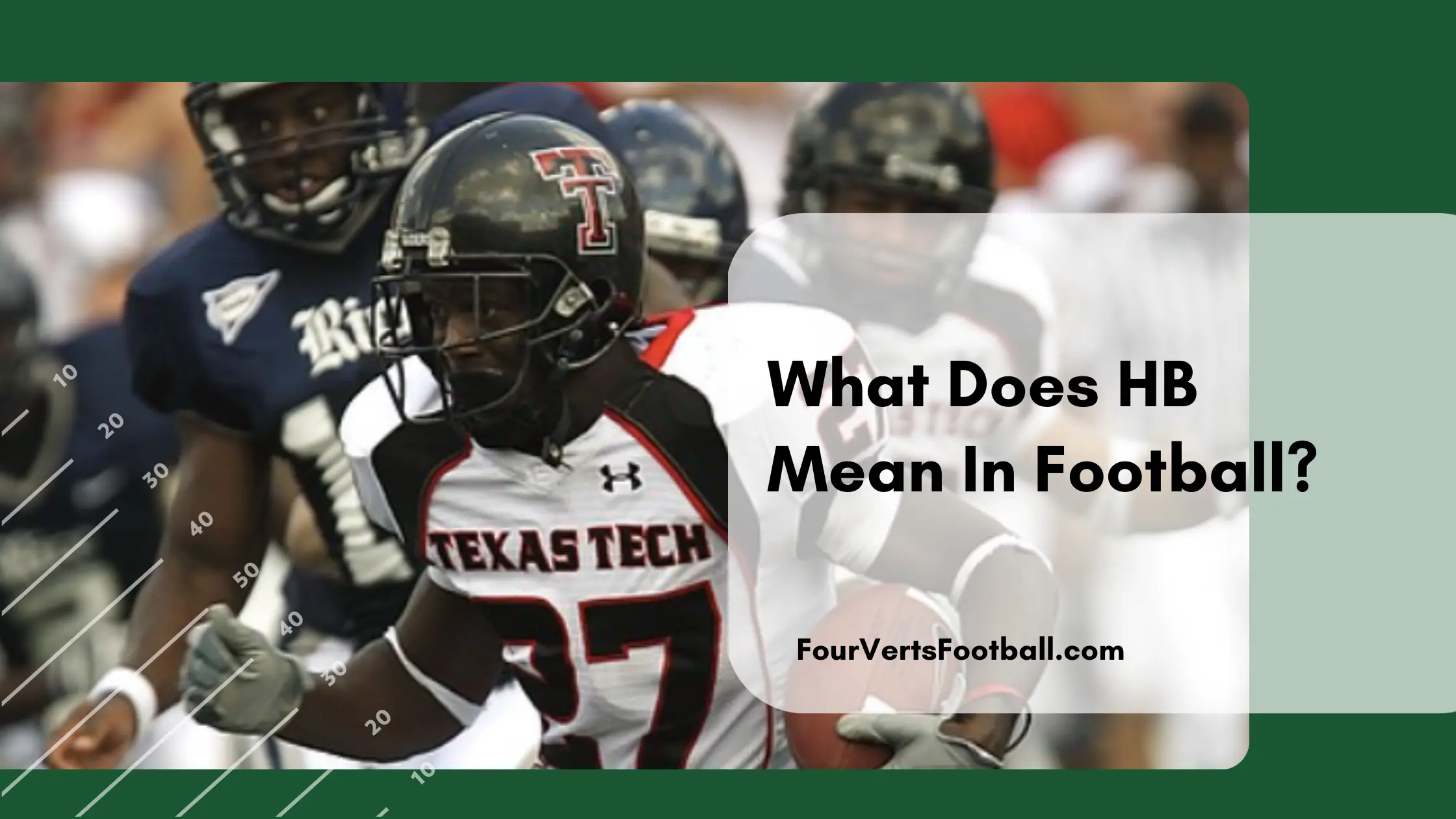The acronym HB in football refers to the halfback position. A halfback is an offensive player that has the primary purpose of rushing the football. Halfbacks are also referred to as running backs or tailbacks.
HBs can line up in a number of areas around the field but usually line up in the pocket near the quarterback. You may see the halfback line up beside, or behind the quarterback to start the play.
In most situations, there is only going to be one running back on the field at a time. Though there are many offensive formations that include two or more running backs.
In terms of stature, HBs have a fair bit of wiggle room. Some NFL halfbacks are as small as five-seven while other running backs that are six foot two have found incredible success as well.
Some other acronyms for offensive positions include WR (wide receiver) or TE (tight end).
What Does A HB Do In Football?
Now that you know that a HB in football is a halfback you may be wondering what exactly these players do in football.
Below we will break down all the major responsibilities that an HB has on the football field.
Carry The Ball
Far and away the most important role of the HB position is rushing the football. On a large number of offensive plays, teams will elect to hand the ball to the HB as opposed to throwing it.
In these plays, the offensive line will attempt to create a hole for the HB to run through. The halfback should take the ball from the quarterback and attempt to hit the hole as soon as it opens.
At this point, the HB should then try to progress the ball as far as he can down the field before being tackled.
Rushing the football like this is usually the way that a halfback is able to make himself valuable to the team.
Receive Passes Out Of The Backfield
One of the other main jobs that a halfback has is catching passes. Though these players are primarily used to rush the ball they are able to catch it as well.
Oftentimes HBs will start the play in the backfield and run to another area of the field so that the quarterback can throw them the ball.
In most cases, HBs are going to run shorter or intermediate routes. Oftentimes the halfback will act as a safety valve for the quarterback to throw to if no receivers are open deeper down the field.
Pass Protection
On top of rushing and catching the ball, the halfback also has responsibilities that do not involve touching the football.
Pass protection involves stopping defenders from reaching the quarterback. On these plays, the halfback will wait in the pocket to see if any defenders get through the offensive line.
If a player does get through the defensive line it is up to the halfback to stop him from reaching the qb.
The defenders rushing the quarterback are often going to be much larger than the halfback which is why they will often utilize cut blocks.
Halfbacks that are able to effectively pass protect get a lot more time on third downs due to the frequency of passing that takes place on this down.
That is all on the HB position to learn some other acronyms see our guide to the LS position or the OG position.

